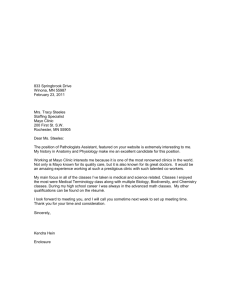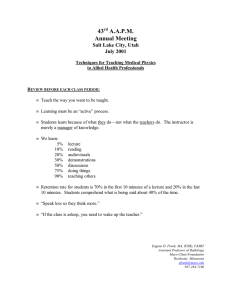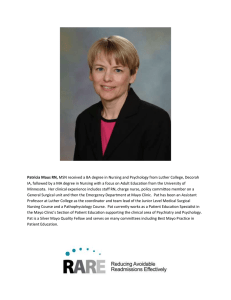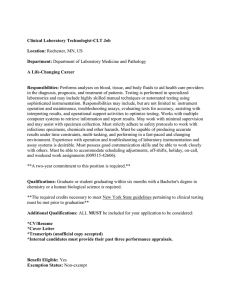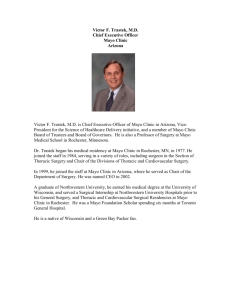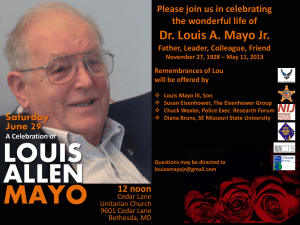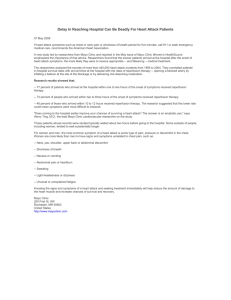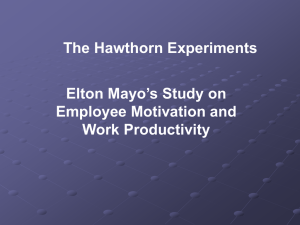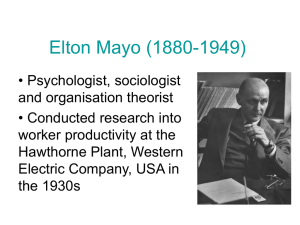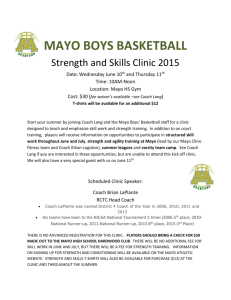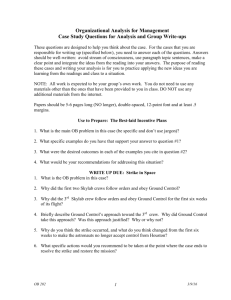week-6-case
advertisement
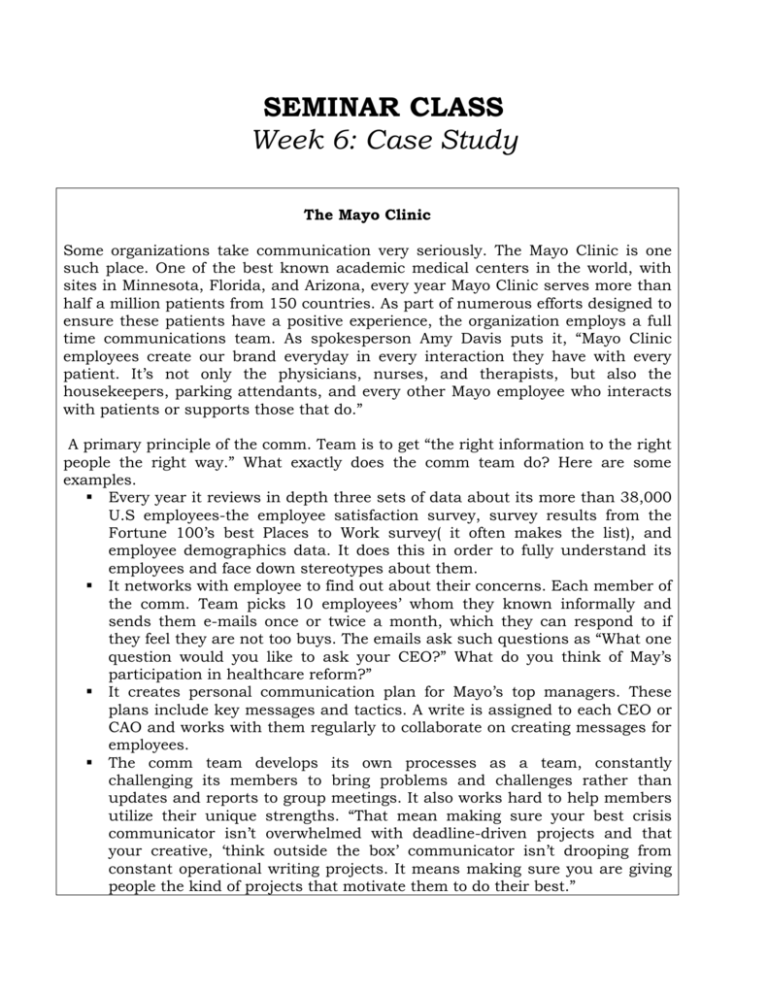
SEMINAR CLASS Week 6: Case Study The Mayo Clinic Some organizations take communication very seriously. The Mayo Clinic is one such place. One of the best known academic medical centers in the world, with sites in Minnesota, Florida, and Arizona, every year Mayo Clinic serves more than half a million patients from 150 countries. As part of numerous efforts designed to ensure these patients have a positive experience, the organization employs a full time communications team. As spokesperson Amy Davis puts it, “Mayo Clinic employees create our brand everyday in every interaction they have with every patient. It’s not only the physicians, nurses, and therapists, but also the housekeepers, parking attendants, and every other Mayo employee who interacts with patients or supports those that do.” A primary principle of the comm. Team is to get “the right information to the right people the right way.” What exactly does the comm team do? Here are some examples. Every year it reviews in depth three sets of data about its more than 38,000 U.S employees-the employee satisfaction survey, survey results from the Fortune 100’s best Places to Work survey( it often makes the list), and employee demographics data. It does this in order to fully understand its employees and face down stereotypes about them. It networks with employee to find out about their concerns. Each member of the comm. Team picks 10 employees’ whom they known informally and sends them e-mails once or twice a month, which they can respond to if they feel they are not too buys. The emails ask such questions as “What one question would you like to ask your CEO?” What do you think of May’s participation in healthcare reform?” It creates personal communication plan for Mayo’s top managers. These plans include key messages and tactics. A write is assigned to each CEO or CAO and works with them regularly to collaborate on creating messages for employees. The comm team develops its own processes as a team, constantly challenging its members to bring problems and challenges rather than updates and reports to group meetings. It also works hard to help members utilize their unique strengths. “That mean making sure your best crisis communicator isn’t overwhelmed with deadline-driven projects and that your creative, ‘think outside the box’ communicator isn’t drooping from constant operational writing projects. It means making sure you are giving people the kind of projects that motivate them to do their best.” Discussions 1. Which particular one-to-one relationships does Mayo focus on? 2. What communication principles does the motto “get the right information to the right people the right way” suggest? 3. What else do you think a communication team might do for a company? (Source: Rae, 2008) Can You Solve This Manager’s Problem? The Young President’s Vision You have taken over the presidency of your father’s successful software engineering firm, a 50-employee business that designs and installs computer networks for moderate-sized businesses in the northwestern United States. Your engineering staff numbers 35 individuals, with an average age of 38. The rest of your employees are support staff, including salespeople, accountants, secretaries, and maintenance workers. Having worked as the company’s vice president for new product development for several years, you realize the company has great potential for growth, especially in Japan. However, you are also aware of some crucial personnel problems. Of your ten top managers, five key ones are in their fifties and you suspect some of them might retire early. Even though your company has a pleasenat family feel about it, you have difficulty comoeting for software engineers against the larger businesses in the regoon because of the salaries they offer. There is a significant lack of international experience among your employees. For on thing, only one engineer, one secretary speak Japanese fluently (and you your-self get by with a limited vocabulary) and only three of your younger engineers have lived abroad for an extended period. Based on the growth you anticipate both domestically (80% of the total) and internationally (20% of the goal), you envision that your company will double its engineering staff within 3 years. To do this effectively, you believe your company must become known as the kind of company people really want to work for. You have scheduled for tomorrow, a meeting of three vice-presidents and the director of human resource s management. They are eager to hear in much greater detail about your three-year vision. Tonight you have to decide exactly what to tell them. 1. Lay out the details of the young president’s vision. To create your vision, use what you have read and learn about the first chapter in OB; a. Challenges that face the organization leaders- globalization etc b. Modern organizational processes that help companies compete 2. Each group should list the keys elements (8-10) of its vision and be ready to present its vision to the class.
